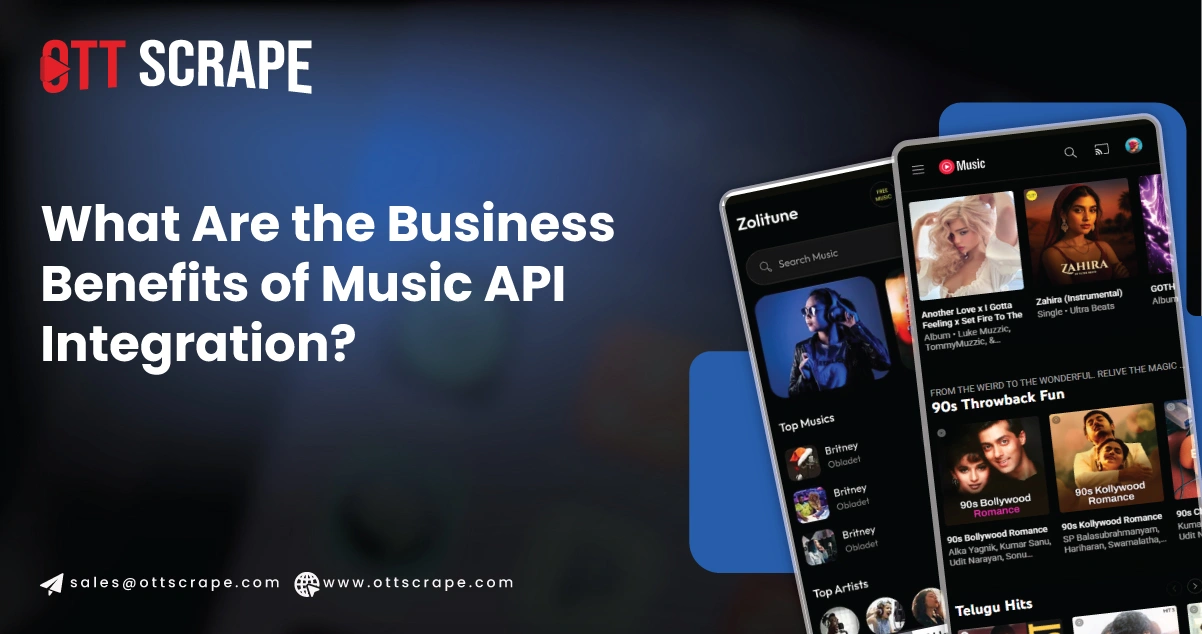
Introduction
In today's digital world, music is more than just rhythm and melody—it's a rich data source. A vast ecosystem of music-related information has emerged with the explosion of streaming services, viral social media tracks, dynamic music charts, and personalized playlists. Many businesses, developers, researchers, and music fans are embracing web scraping and music API integration as essential tools to tap into these insights. These technologies allow users to gather real-time data on track popularity, artist performance, genre trends, and listener behavior. While music API access provides structured, authorized data from platforms like Spotify and Apple Music, scraping complements it by unlocking data from review sites, lyrics databases, and charts. Organizations can leverage the best music APIs to build advanced applications, optimize marketing strategies, or conduct in-depth music analytics. As a result, the fusion of music and data is reshaping how the industry understands and interacts with sound.
The Digital Symphony: Why Music Data Matters
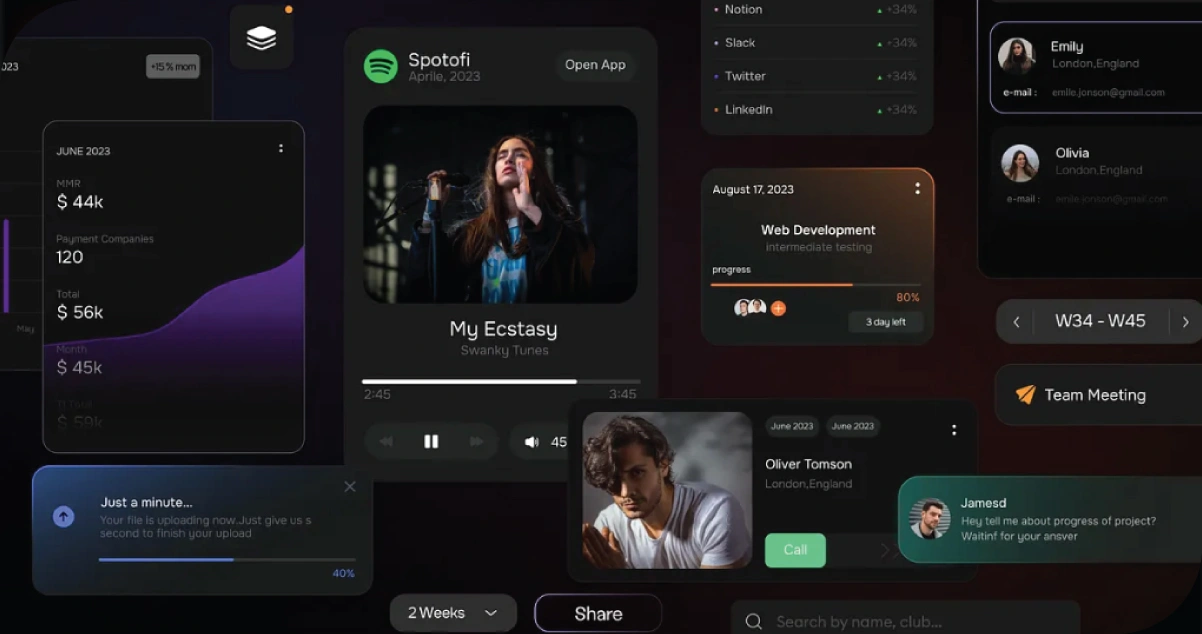
Every stream, like, share, and comment creates a digital footprint in the music landscape. From Spotify's weekly charts to YouTube view counts and Genius's annotated lyrics, the music world constantly generates structured and unstructured data. Web scraping music data from these platforms reveals valuable patterns about listener behavior, song popularity, artist performance, and emerging genres, offering deep insights into how audiences engage with sound across the digital ecosystem. By scraping music data, stakeholders can answer critical
questions:
- What tracks are trending globally or regionally?
- How do listener preferences shift over time?
- What lyrical themes resonate most with fans?
- Which new artists are gaining traction?
- How does playlist placement affect a song's popularity?
The answers to these questions benefit more than artists and record labels—they also benefit advertisers, event organizers, streaming services, and even AI music composers.
Popular Sources for Music Data Scraping
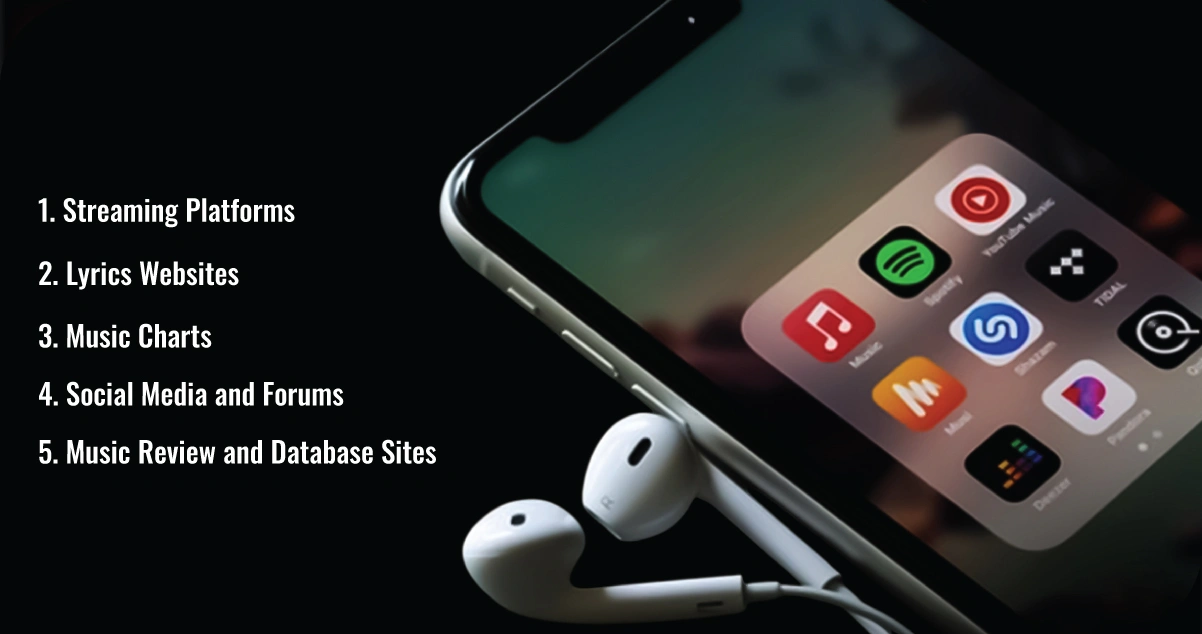
A wide range of platforms serve as gold mines for music data. These include:
1. Streaming Platforms
Platforms like Spotify, Apple Music, and YouTube Music house massive libraries of music metadata. Scraping this data can reveal song titles, albums, release dates, genres, artists, and popularity metrics like streams or likes.
- Spotify : is particularly rich in data. You can access details like track popularity scores, audio features (like danceability and tempo), playlist appearances, and listener counts.
- YouTube Music : also offers insights into video engagement, including view counts, likes/dislikes, comments, and timestamps of attention peaks.
2. Lyrics Websites
Sites like Genius and AZLyrics host user-curated lyric content, often including song annotations, meanings, and user discussions. Scraping these platforms can help researchers and marketers analyze lyrical trends, identify cultural references, and map out song structures.
3. Music Charts
Billboard, iTunes, and regional charting websites provide regularly updated rankings of top songs. This is ideal for tracking hits across different countries or analyzing the rise and fall of tracks over time.
4. Social Media and Forums
Reddit music communities, Twitter hashtags, and TikTok sounds are key indicators of what's resonating with the masses. Scraping these platforms can capture mentions, shares, and conversations around specific artists or songs.
5. Music Review and Database Sites
Platforms like Pitchfork, Metacritic, and AllMusic provide in-depth reviews, ratings, and curated lists. Scraping them can uncover critical reception, sentiment analysis, and artist comparisons.
Applications of Web-Scraped Music Data
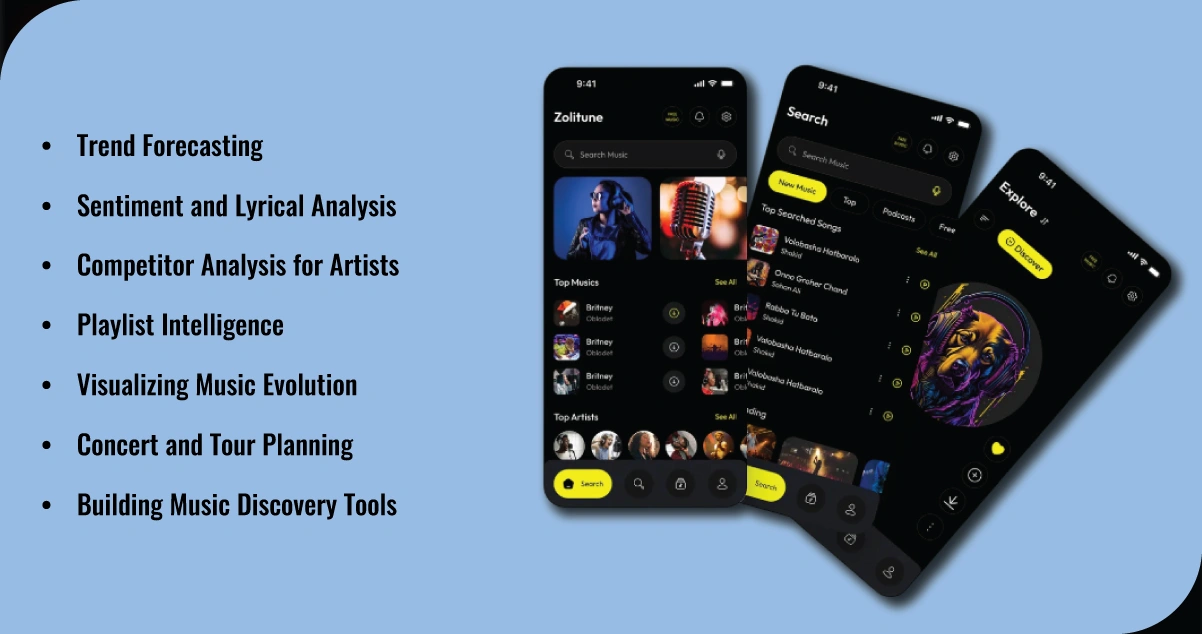
- Trend Forecasting: Web scraping enables real-time collection of trends across platforms. Music marketers and streaming services use this data to forecast what genres or artists might explode next. One can pinpoint real-time breakout moments by tracking song usage in viral TikToks or sudden streaming spikes on Spotify.
- Personalized Recommendations: Recommendation engines rely on accurate, granular music data. Scraping audio features, user preferences, and playlist content helps refine algorithms that offer better song suggestions. The richer the dataset, the more intelligent and personalized the recommendation.
- Sentiment and Lyrical Analysis: Natural language processing tools can be applied to lyrics data collected from sites like Genius to understand the emotions conveyed in music. Marketers may find which emotional tones (e.g., sadness, empowerment, nostalgia) dominate a particular era or genre.
- Competitor Analysis for Artists: Independent artists and record labels can scrape data to benchmark against similar acts. Who's climbing charts in their niche? What playlists feature their competitors? How do their streaming numbers compare? These insights can inform promotional strategies.
- Playlist Intelligence: Playlists drive music discovery. Scraping curated lists—like Spotify's "RapCaviar" or Apple's "Today's Hits"—can reveal which songs are being heavily promoted. This information is critical for music promotion agencies seeking placements.
- Visualizing Music Evolution: Researchers and journalists often use scraped music data to map how genres and music trends have evolved. For instance, charting the rise of EDM between 2010 and 2015 or the surge of lo-fi music during the pandemic paints a story about cultural shifts.
- Concert and Tour Planning: Event planners can scrape regional streaming and search data to determine where an artist's fanbase is most substantial. This allows for more efficient tour routing and marketing.
- Building Music Discovery Tools: Developers use scraped data to build music apps, visualizations, and discovery platforms. A mashup generator, AI music summarizer, or even a genre classifier relies on a rich dataset of audio and metadata.
Real-World Examples and Use Cases
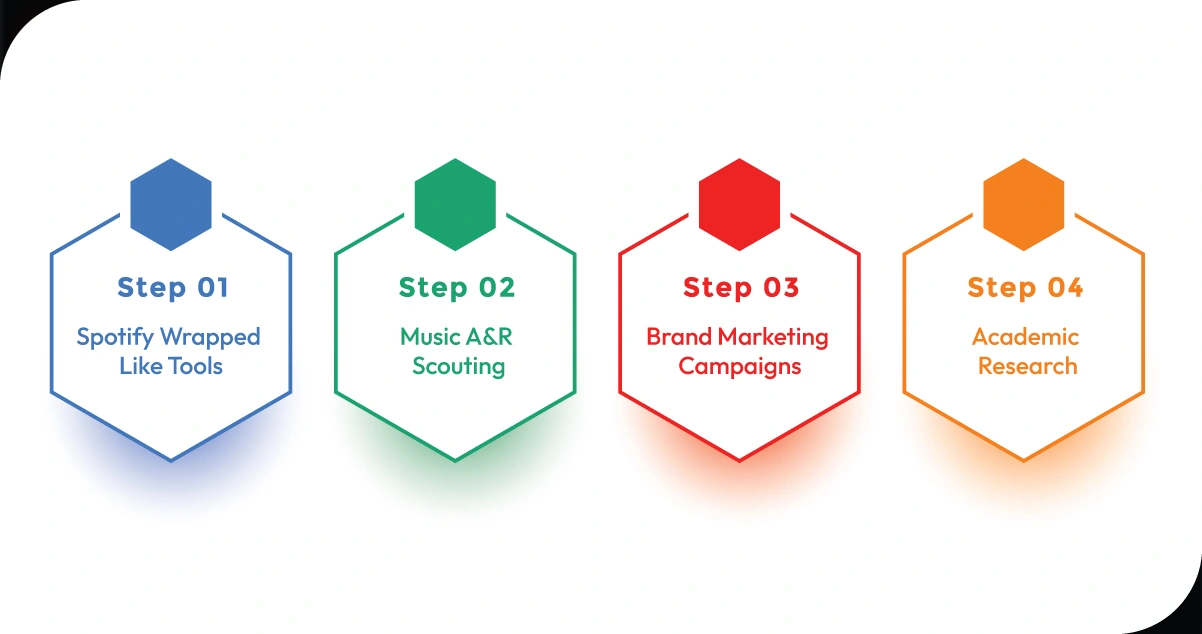
- Spotify Wrapped-Like Tools: Several third-party applications use scraped data to create personalized summaries similar to Spotify Wrapped, showing users their most-played songs or genres.
- Music A&R Scouting: Web scraping tools help talent scouts discover unsigned artists gaining traction across platforms like SoundCloud or YouTube.
- Brand Marketing Campaigns: Brands tie campaigns to trending songs scraped from TikTok or Instagram to stay culturally relevant.
- Academic Research: Scholars studying sociolinguistics, music therapy, or pop culture frequently use scraped lyrics and chart data for their research.
Why Web Scraping Outperforms Manual Data Collection?
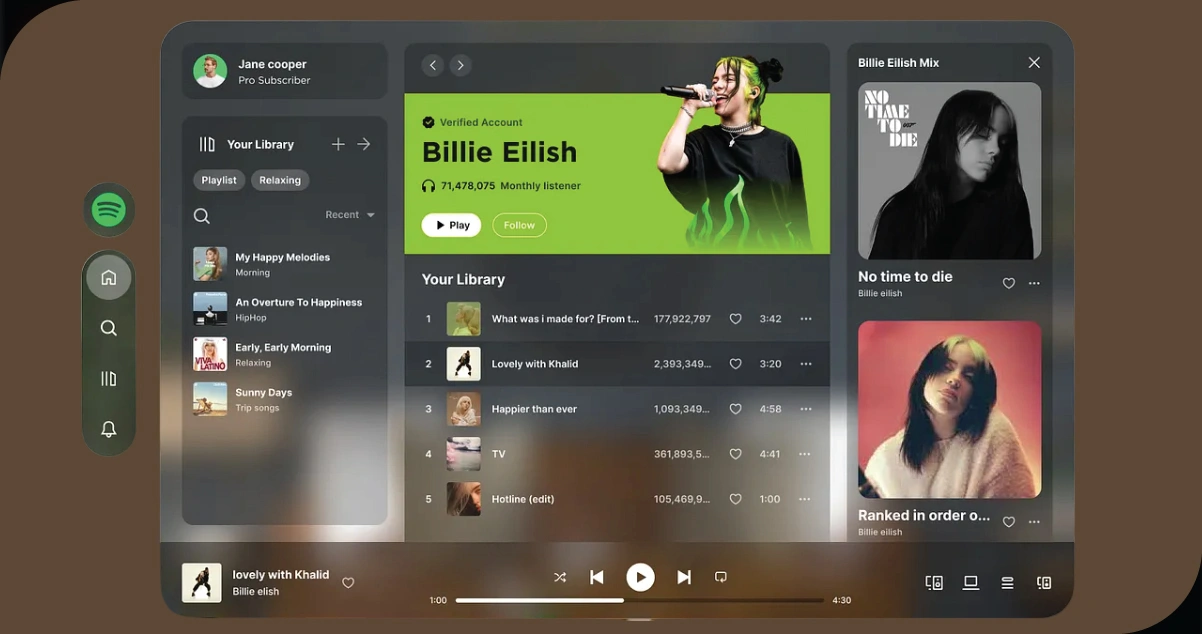
Manually collecting this wealth of data is time-consuming, inconsistent, and error-prone. Web scraping automates the process, delivering:
- Scale – Collect thousands of data points across multiple platforms instantly.
- Speed – Monitor real-time changes in music trends and popularity.
- Structure – Organize unstructured content like lyrics, reviews, and tweets into usable datasets.
- Frequency – Schedule scrapes to occur hourly, daily, or weekly to keep datasets fresh. With automation, data is no longer a bottleneck—it becomes a strategic advantage.
Technologies Powering Music Data Scraping
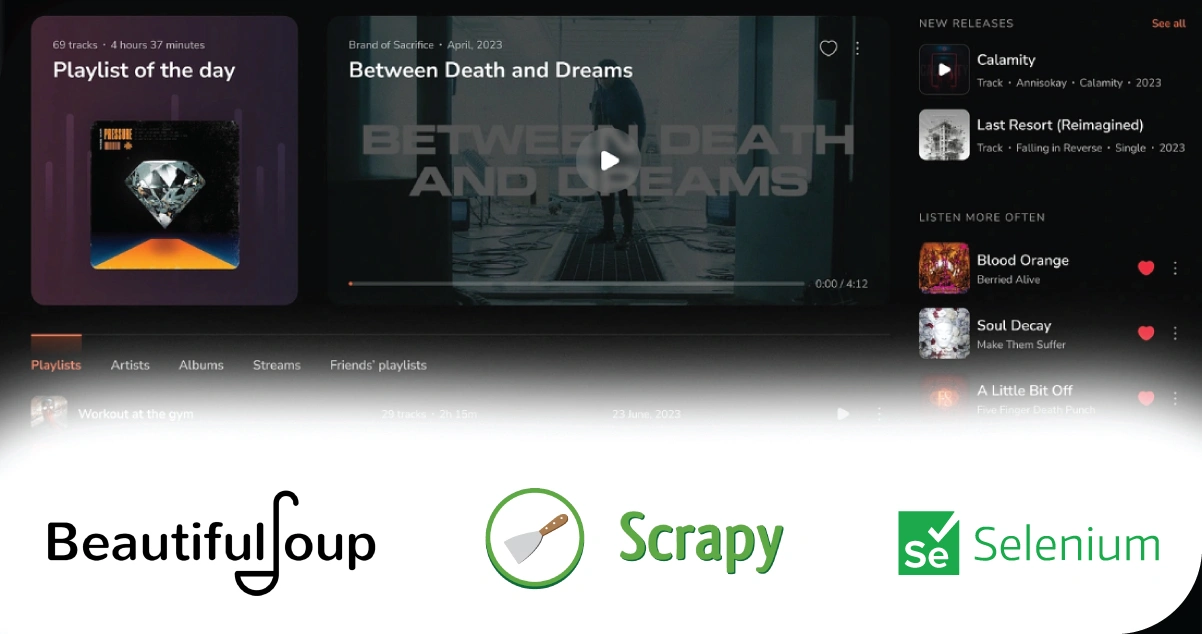
While this blog does not detail the scraping process itself, it's worth noting that popular tools and frameworks in this space include:
- BeautifulSoup and Scrapy for HTML parsing and data extraction
- Selenium for dynamic content scraping
- APIs (like Spotify's public API) for structured data collection
- Python, R, or Node.js as programming environments
- Cloud-based scrapers for large-scale, real-time data harvesting
These technologies allow scalable, efficient data gathering, often tailored to specific needs such as playlist tracking or review analysis.
Shaping the Future of Music Through Data
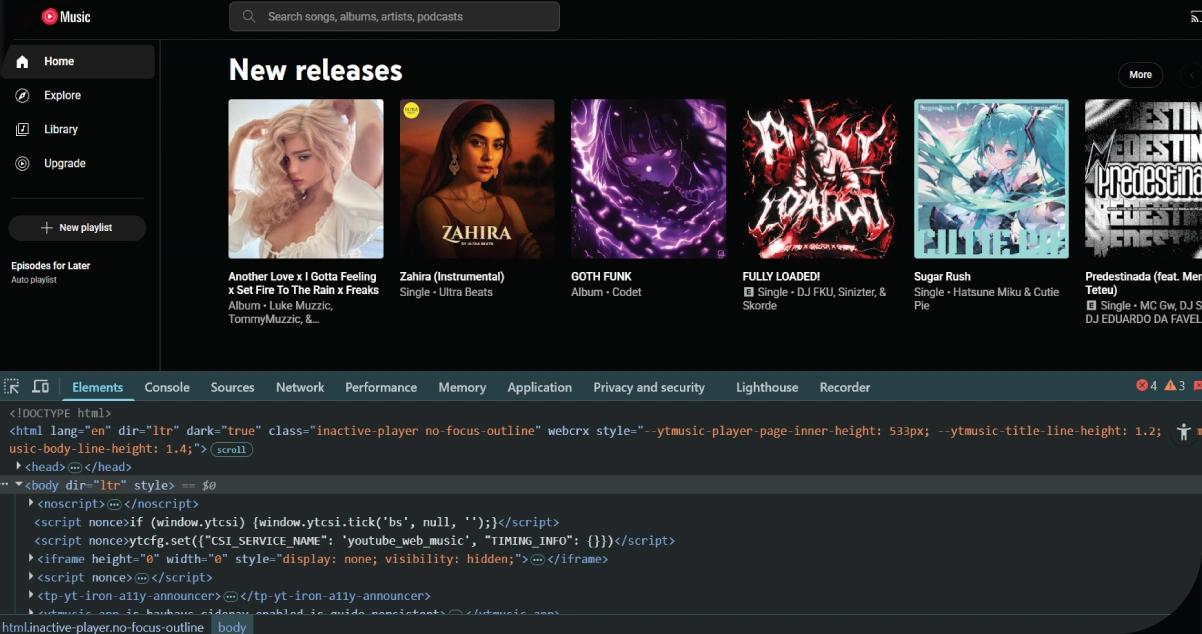
Music has always been a reflection of culture, emotion, and identity. Today, it's also a reflection of data. By leveraging web scraping, we're no longer just listening to songs—we're listening to the story the numbers tell. From identifying global hits before they trend to understanding how a single lyric can spark a movement, data gives the music a second voice—one of insight.
Top music APIs 2025 are making it easier than ever to tap into these insights. Web scraping is democratizing access to that voice. Artists can shape their sound based on audience feedback. Brands can sync campaigns to sonic trends. Researchers can trace cultural shifts through chart dynamics. In short, music data is becoming as powerful as the music itself.
How OTT Scrape Can Help You?
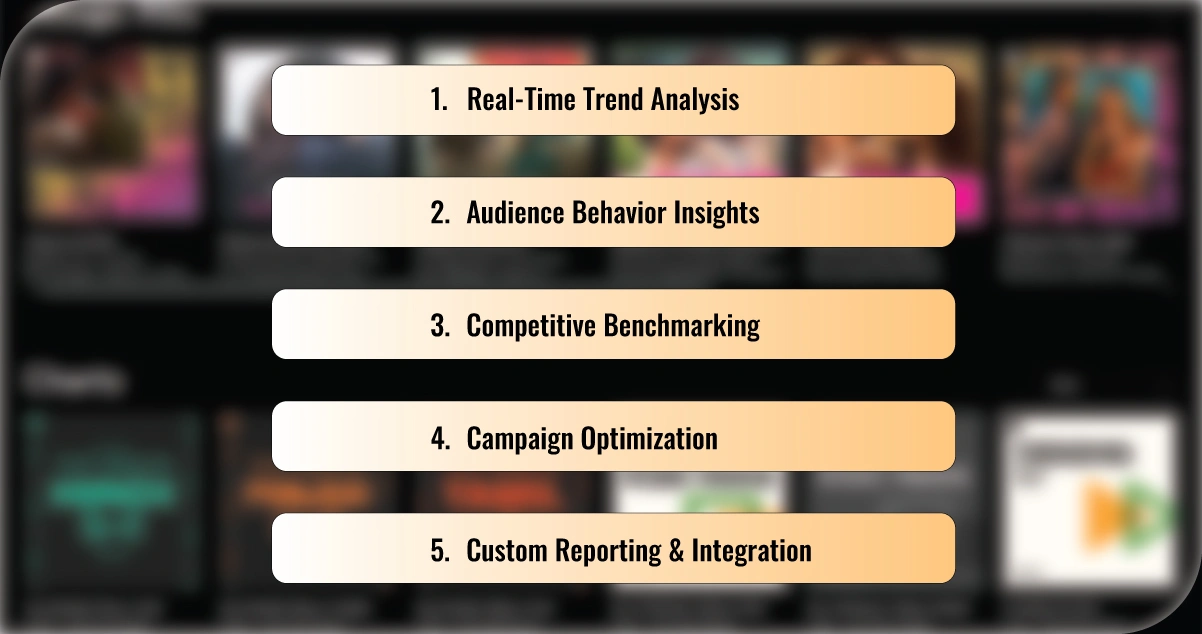
1. Real-Time Trend Analysis: We deliver up-to-date insights from platforms like Spotify, YouTube, and Apple Music, helping businesses track rising tracks, genres, and artist popularity as they happen.
2. Audience Behavior Insights: Scraping data such as play counts, likes, and shares, we help businesses understand listener preferences and tailor campaigns or product offerings accordingly.
3. Competitive Benchmarking: Our services extract comparative data on competitors' performance, allowing labels, brands, and platforms to assess market position and refine strategies.
4. Campaign Optimization: We provide data that empowers marketers to align ads, playlists, and promotions with current sonic trends, enhancing engagement and ROI.
5. Custom Reporting & Integration: Clients receive customized dashboards and can integrate scraped data with internal tools via APIs, streamlining decision-making and enhancing music intelligence.
Final Note
Whether you're an emerging artist looking to grow your fanbase, a marketer aiming to align with the perfect soundtrack, or a data scientist creating predictive models, the ability to scrape song data opens up immense potential. Music is no longer only about listening—it's about understanding patterns, behaviors, and audience preferences through data. Professionals across industries can make informed decisions by tapping into real-time streaming statistics, playlist compositions, and trending charts. Leveraging a music API for professionals allows access to structured, on-demand information from platforms like Spotify, YouTube, and SoundCloud. Combined with web scraping techniques, this approach empowers innovation in music discovery, trend forecasting, and fan engagement. The future of music lies in how well we can analyze, visualize, and personalize every note.
Embrace the potential of OTT Scrape to unlock these insights and stay ahead in the
competitive world of streaming!
